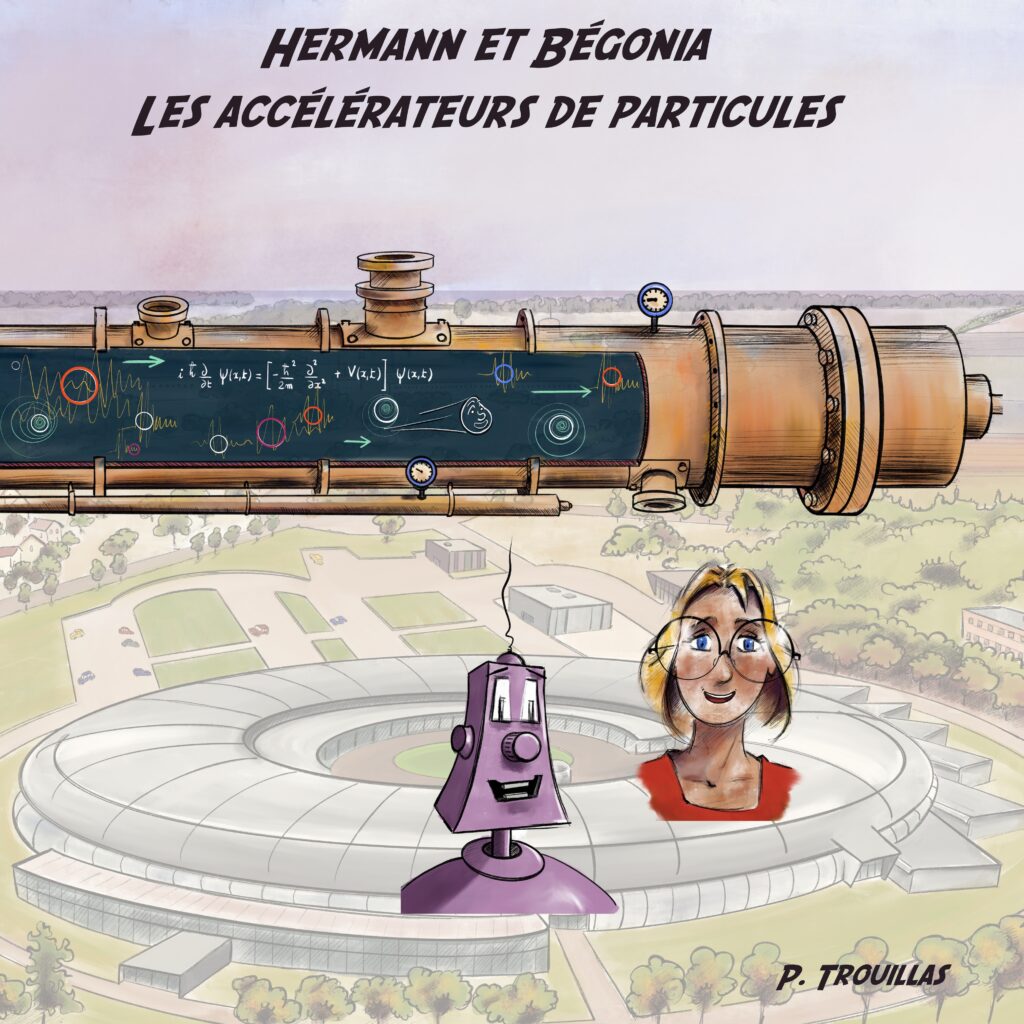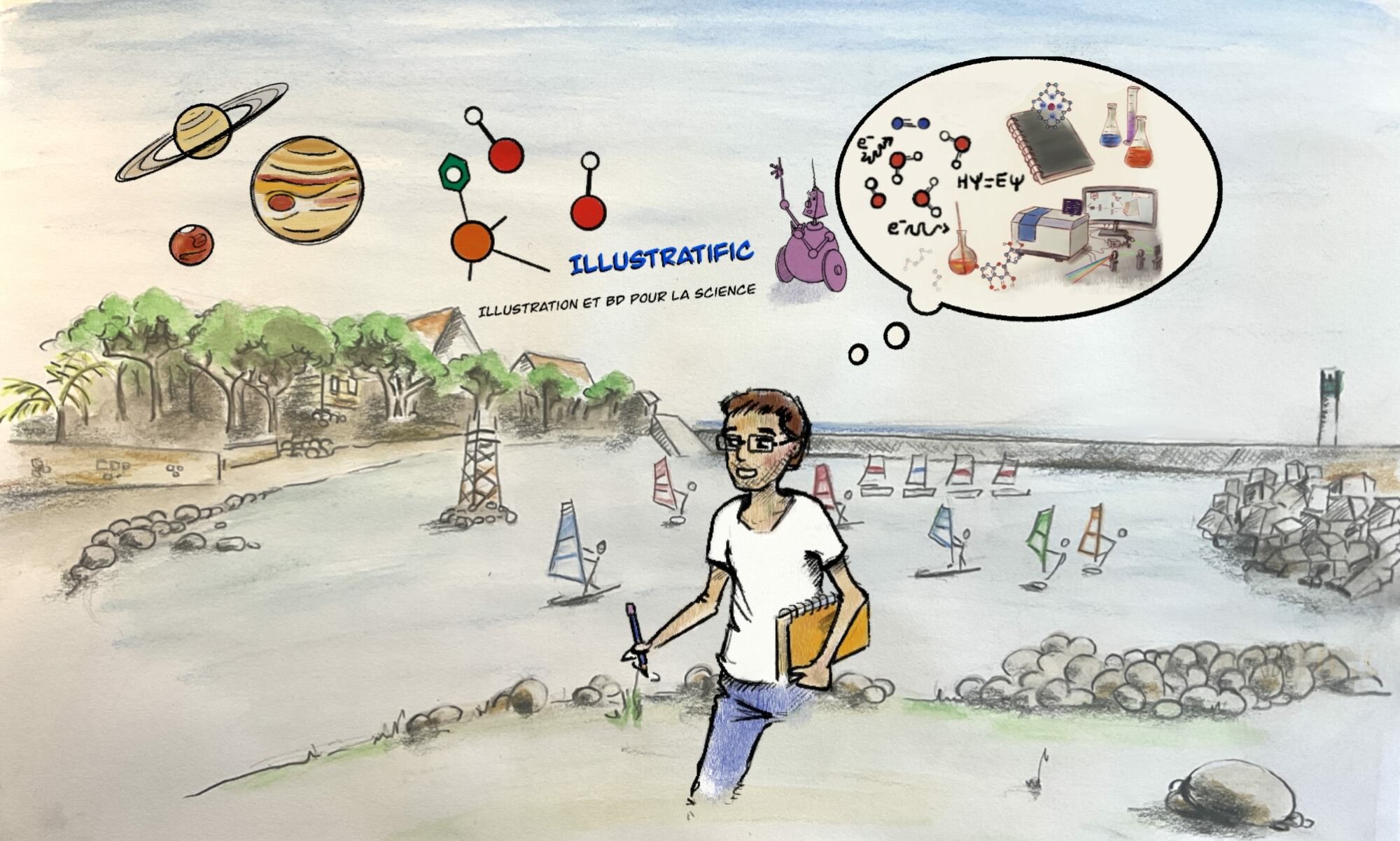
Today, Begonia is at the dentist. She hears about a clinical study, Gargtest, which aims to use a simple saliva test, much more pleasant than the nasal test, to detect papillomavirus. This virus is sexually transmitted and can cause certain cancers. Hermann quickly explains the principle of the test to Begonia and takes her to meet the Czech colleagues in charge of this new test.
Hermann and Bégonia are out for a walk in the Corrèze countryside when Bégonia is struck by a terrible bout of sneezing. She complains to Hermann, who launches into an explanation of the allergic process and ways of stopping it. Hermann and Bégonia also discuss the alarming increase in the number of people with allergies.


Hermann and Begonia are walking at the Prague Christmas market. Begonia is very concerned about the worrying increase in deaths caused by infections, an increase predicted by scientists in the coming decades. Hermann tells him about a new development at the CATRIN research institute. Researchers there developed a graphene-based biomaterial that anchors manganese atoms. The system can bind onto the membrane surface of bacteria, release manganese and block their vital functions. This new antibiotic seems particularly effective and numerous applications are within reach.
Hermann and Begonia are on vacation in the Orléans region. They cycle along fields of flax and its little purple flowers. This journey will lead them to the heart of this plant and its riches. You will learn, with Begonia, everything that scientists are trying to extract from this plant. Many natural molecules, notably polyphenols, have yet to be developed, for example in the field of cosmetics (antioxidant and anti-aging lotions, etc). Ancestral extraction methods are being brought up to date by researchers from the University of ‘Orleans.

Supercapacitor powers superhero
In the heart of the Haná region, Bégonia goes jogging with Hermann. But today Hermann seems particularly in good shape. It actually uses a new prototype supercapacitor made from graphene, containing nitrogen atoms, which make the material very dense. This new material accumulates much more charge, and therefore greater energy, in a smaller region. We expect many applications, particularly in aeronautics.
During a walk, Hermann and Bégonia reach the Faculty of Sciences in Limoges. They are confronted by a mysterious scientific instrument. It’s a particle accelerator explains Hermann! as usual, he goes into great explanations to satisfy Begonia’s thirst for knowledge! Together With her, you can discover the fascinating world of particle accelerators. Hermann and Bégonia would like to thank the Scientibus, the University of Limoges, the Comic Seminar and Kulturamt of Erlangen, and finally a special dedication to Ralf Marczinczik and Paul Derouet.


Hermann and Begonia are finishing their holiday in South America. As they reminisce about their holiday, Begonia nibbles on some crisps, when suddenly she comes across an unappetizing spotted crisp. Hermann explains that the potato used to make the crisps had a disease called Zebra Chip, caused by a bacterium transmitted by insects. Scientists at the CATRIN research institute are developing biotechnology strategies to identify the presence of these pathogens as early as possible.
Hermann and Begonia have just attended a fascinating conference on cystic fibrosis, a rare genetic disorder. Hermann explains to Begonia the biochemical processes responsible for this disease, as well as how the new treatments work. The effects of these treatments are very encouraging, and in just a few years they have already reduced the number of lung transplants performed each year from 20 to 2.


Bégonia worries about pollution in Paris and she wonders how long humanity will depend on oil. Hermann explains to her what peak oil is, a special moment difficult to predict at a worldwide scale. Based of graphics, Herman tries to answer to Bégonia about this highly topical issue, which impacts our daily life. This adventure was built together with Patrick Brocorens, peal oil expert at the University of Mons in Belgium, thanks go to him.
Today, Bégonia is waiting to be vaccinated against Covid. While waiting for her appointment, she revises her lesson in biology about DNA. That’s when Hermann finds her and launches into an explanation of what RNA vaccine is. Only a journey deep in the middle of the cells of our organism allows better understanding of how this type of vaccine can fight against this virus. This adventure was built with the help of Sébastien Hantz from University Hospital of Limoges, thanks go to him.


Today, Hermann and Begonia are enjoying a lovely run in the Limousin countryside. While Begonia is running out of steam, Hermann has entered into a comprehensive presentation of water resources in the Limousin region. He talks about run-off of water on granite soils, microorganisms, pollutants, water quality… This adventure was built with the support of Véronique Deluchat and Robin Guibal from the University of Limoges, thanks go to them.
Begonia is discovering the fascinating but so complex world of quantum objects, including electrons. Today, Hermann invites Begonia to meet his friend ROB, a quantum computer. It is a real leap into the future, to meet a computer speaking a really bizarre language made of quantum bits, i.e., sequences of quantum 0 and 1 digits! Come and jump into this complex adventure of Hermann and Begonia!


This comics illustrates and tells the story of a European research project… a European adventure. Polythea or « How light can save lives » is a Marie Curie Innovative Training Network, gathering 7 universities, 4 industrial partners and 1 research institute. Ten young researchers have developed their research projects, their skills and their carrer projects.
In search for antibiotics in water
Begonia is sick. She has to take antibiotics but she is worried about bacterial resistance because of the presence of antibiotics in the water. It is a well-known health problem and Hermann knows researchers from the CATRIN institute in the Czech Republic who are working on a new detector. Its operating principle is based on specific detection of antibiotics using nanotechnology; the detector is easy to use and connects directly to your smartphone.


Hermann and Begonia are walking in the forest with David, a researcher from the CATRIN institute in the Czech Republic. David worked within an international consortium to explain the origin of the luminescence emitted by male fireflies. At the time when these insects acquired this ability, they had no real predators. The biological role of this function is therefore essentially the seduction of females!
Hermann’s energetic résurrection
Hermann was unable to accompany Bégonia in her jogging in the streets of Olomouc in the Czech Republic; his batteries are flat! Fortunately, researchers at the CATRIN Institute in the Czech Republic have developed a new battery based on nanotechnology. These super-capacitors recharge very quickly. They are made up of molecular sheets of carbon (graphene) on which the charges accumulate.


Hermann and Begonia enjoy a good meal during a craft fair on the main square of Olomouc in the Czech Republic. They worry about the degradation of the quality of food products due to the abuses of the food industry. To reduce costs, the hidden use of mixtures of beef and pork exists. Researchers at the CATRIN Institute in the Czech Republic have developed a nanotechnology-based detector to identify the presence of pork in beef steaks.

